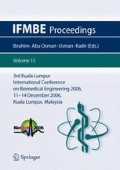Abstract
This paper presents a procedure of frame normalization based on the traditional dynamic time warping (DTW) using the LPC coefficients. The redefined method is called as the DTW frame-fixing method (DTW-FF), it works by normalizing the word frames of the input against the reference frames. The enthusiasm to this study is due to neural network limitation that entails a fix number of input nodes for when processing multiple inputs in parallel. Due to this problem, this research is initiated to reduce the amount of computation and complexity in a neural network by reducing the number of inputs into the network. In this study, dynamic warping process is used, in which local distance scores of the warping path are fixed and collected so that their scores are of equal number of frames. Also studied in this paper is the consideration of pitch as a contributing feature to the speech recognition. Results showed a good performance and improvement when using pitch along with DTW-FF feature. The convergence rate between using the steepest gradient descent is also compared to another method namely conjugate gradient method. Convergence rate is also improved when conjugate gradient method is introduced in the backpropagation algorithm.
Access this chapter
Tax calculation will be finalised at checkout
Purchases are for personal use only
Preview
Unable to display preview. Download preview PDF.
References
Sakoe H and Chiba S (1978). Dynamic Programming Algorithm Optimization for Spoken Word Recognition, IEEE Transactions on Acoustics, Speech and Signal Processing. ASSP-26(1): 43–49.
M. Magimai-Doss M (2003). Using Pitch Frequency Information in Speech Recognition. Proceedings of 8th European on Speech Communication and Technology. Geneva, Switzerland. 4: 2525–2528.
Abdulla W H, Chow D and Sin G (2003). Cross-Words Reference Template for DTW-based Speech Recognition System. IEEE Technology Conference (TENCON). Bangalore, India, 1: 1–4.
Creany M J (1996). Isolated Word Recognition using Reduced Connectivity Neural Networks with Non-Linear Time Alignment Methods. PhD Thesis, University of New Castle-Upon-Tyne, UK.
Uma S, Sridhar, V, and Krishna G (1992). Time-Normalization Techniques for Speaker-Independent Isolated Word Recognition. Proceedings of Pattern Recognition Conference: Image, Speech and Signal Analysis. 3: 537–540.
Prasanna S R M, Zachariah J M, and Yegnanarayana B (2004). Neural Network Models for Combining Evidence from Spectral and Suprasegmental Features for Text-Dependent Speaker Verification. Proceedings of International Conference on Intelligent, Sensing, and Information Processing. pp 359–363.
B. R. Wildermoth. 2000. Text-Independent Speaker Recognition using Source Based Features. Master of Philosophy Thesis Griffith University, Australia.
Botros N M and Premnath S (1992). Speech Recognition using Dynamic Neural Networks. International Joint Conference in Neural Network. 4: 737–742.
Soens P and Verhelst W (2005). Split Time Warping for Improved Automatic Time Synchronization of Speech. Proceeding of SPS DARTS, Antwerp, Belgium.
Sudirman R., Salleh S-H, and Ming T C (2005). Pre-Processing of Input Features using LPC and Warping Process. Proceeding of 1st International Conference on Computers, Communications, and Signal Processing, Kuala Lumpur. pp 300–303.
Sudirman R, Salleh S-H and Salleh S (2006). Local DTW Coefficients and Pitch Feature for Back-Propagation NN Digits Recognition. IASTED International Conference on Networks and Communications, Chiang Mai, Thailand. pp 201–206.
Hagan M T, Demuth H B, and Beale M (1996). Neural Network Design. Boston: PWS Publishing Company.
Author information
Authors and Affiliations
Editor information
Editors and Affiliations
Rights and permissions
Copyright information
© 2007 Springer-Verlag Berlin Heidelberg
About this paper
Cite this paper
Sudirman, R., Salleh, SH., Salleh, S. (2007). Hybrid Method for Digits Recognition using Fixed-Frame Scores and Derived Pitch. In: Ibrahim, F., Osman, N.A.A., Usman, J., Kadri, N.A. (eds) 3rd Kuala Lumpur International Conference on Biomedical Engineering 2006. IFMBE Proceedings, vol 15. Springer, Berlin, Heidelberg. https://doi.org/10.1007/978-3-540-68017-8_19
Download citation
DOI: https://doi.org/10.1007/978-3-540-68017-8_19
Publisher Name: Springer, Berlin, Heidelberg
Print ISBN: 978-3-540-68016-1
Online ISBN: 978-3-540-68017-8
eBook Packages: EngineeringEngineering (R0)

